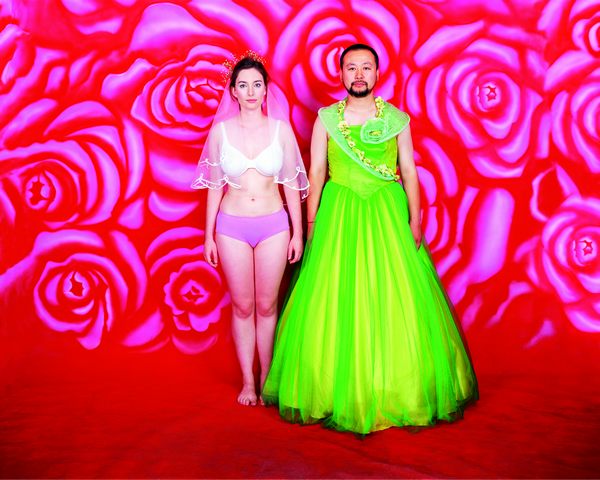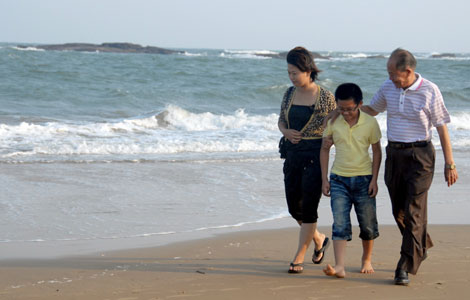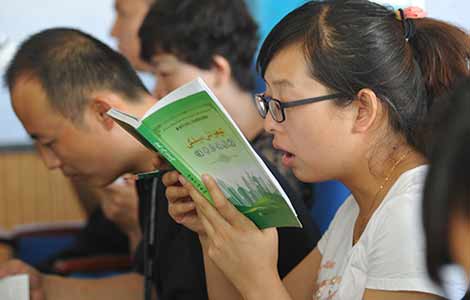Recognition factor
Updated: 2013-08-11 08:22
By Su Zhou and Luo Wangshu (China Daily)
|
||||||||
Living conditions have improved for Cang and most other contemporary artists, but public indifference continues to be an issue. While traditional art is welcomed, contemporary art is usually shunned, he says.
Edward Sanderson, a British curator and writer based in Beijing, who is writing a book on Cang, says he has learned much about the misunderstandings Cang's work has created.
 |
|
Cang's serial work Identity Exchange (2004), dealt with the rapid changes in Chinese society brought about by economic reform. |
"One of Cang's series of artworks titled Communication, is a collection of photographs of Cang licking different things: photos, a snake, even the Great Wall. This is beyond our common-sense understanding because culture teaches us not to put something unclean in our mouth," says Sanderson.
"Things like this become a stereotype and we can easily dismiss it due to misunderstandings. But artists have their reasons and they want to push us to think. This is the charm of contemporary art."
Sanderson says patience is key, noting that contemporary art in China is a mere 30 years old and needs more exposure here.
"The understanding of contemporary art needs theoretical grounding," says Gu Zhenqing, an independent exhibition planner, "which means education in school and university should focus on more categories of different art."
Cang isn't annoyed by misunderstandings. Instead he takes it as an opportunity to explain his art. When a language barrier made this difficult abroad, he used body language and invited people to become a part of his performance art.
While contemporary artists still face struggles, there is no doubt that times are better. Cang no longer scrounges for food, but enjoys a large workshop in Beijing with several assistants. He is currently working on a giant piece of artwork with a Buddhist theme.
While the government has supported contemporary art by funding spaces such as 798, Cang believes this is not the right direction.
"The way to support us is to leave us alone," he says. "Governments should be tolerant of artistic expression. Targeting problems is the nature of contemporary art because we are always thinking critically."

 'Despicable' minions upset Depp's 'Lone Ranger' at box office
'Despicable' minions upset Depp's 'Lone Ranger' at box office
 'Taken 2' grabs movie box office crown
'Taken 2' grabs movie box office crown
 Rihanna's 'Diamonds' tops UK pop chart
Rihanna's 'Diamonds' tops UK pop chart
 Fans get look at vintage Rolling Stones
Fans get look at vintage Rolling Stones
 Celebrities attend Power of Women event
Celebrities attend Power of Women event
 Ang Lee breaks 'every rule' to make unlikely new Life of Pi film
Ang Lee breaks 'every rule' to make unlikely new Life of Pi film
 Rihanna almost thrown out of nightclub
Rihanna almost thrown out of nightclub
 'Dark Knight' wins weekend box office
'Dark Knight' wins weekend box office
Most Viewed
Editor's Picks

|

|

|

|

|

|
Today's Top News
Searching on missing Chinese is still underway
Fonterra recalls formula in Sri Lanka
Human H7N9 infection confirmed
Iraq bombing wave kills over 60
Beijing busts big fraud gang
40 killed in attacks across Iraq
Chilly talks expected for US, Russia
India, Pakistan exchange fire
US Weekly

|

|





